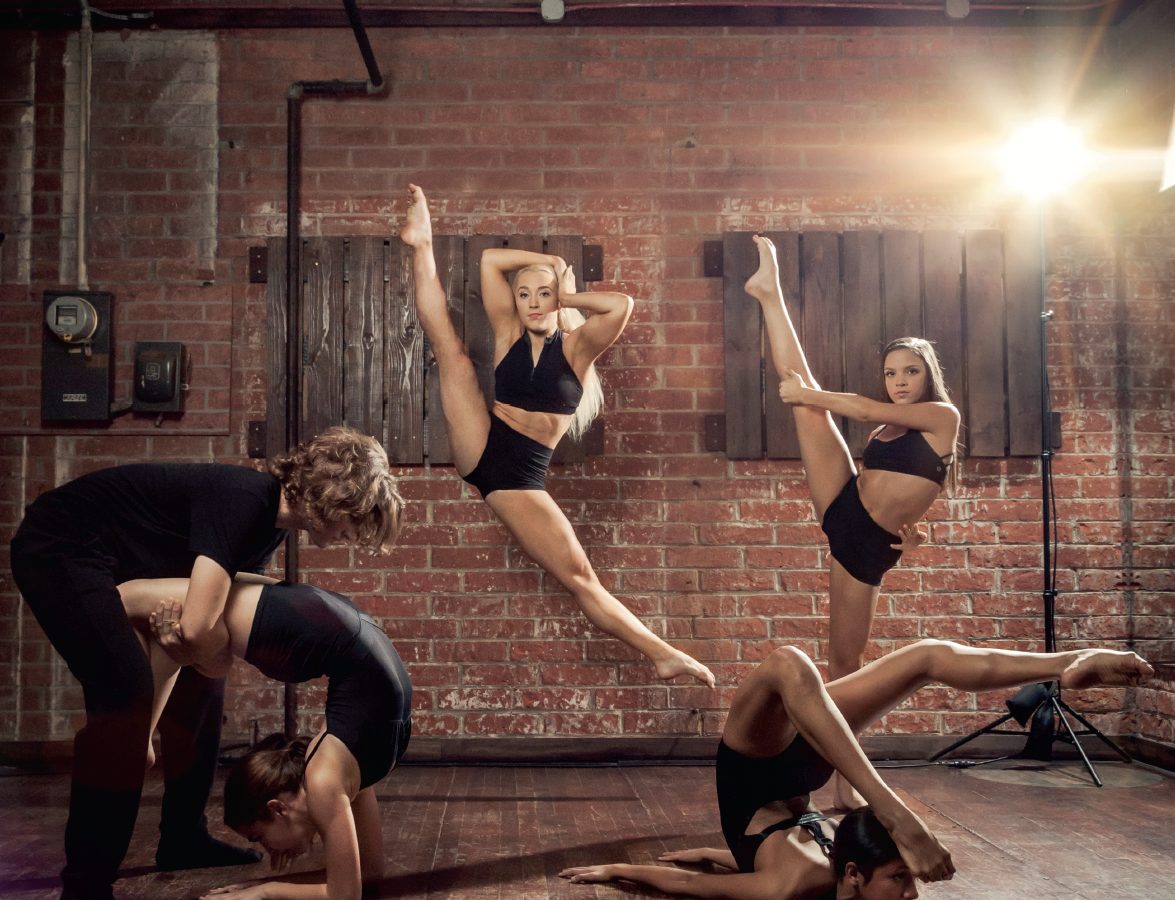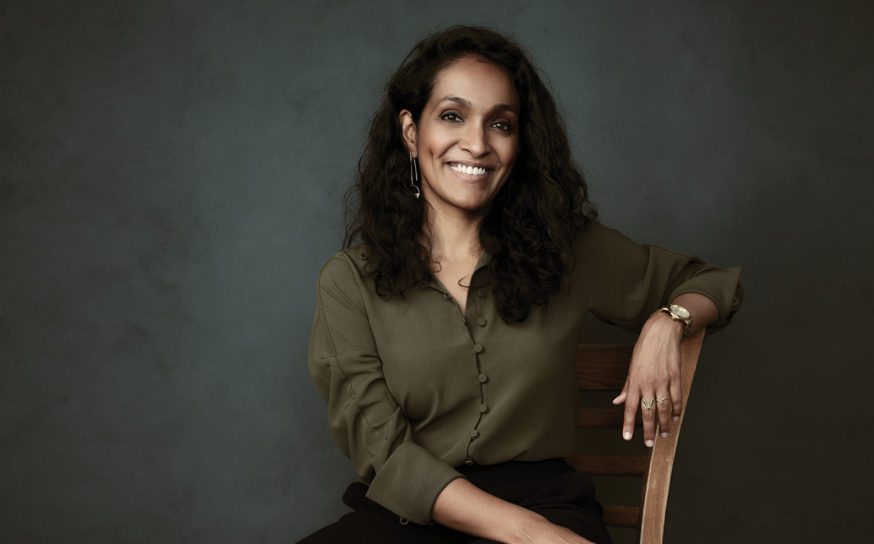
First Position
From Justin to Britney to Usher, Millennium Dance has been the premiere spot in LA to train and rehearse. Now well into its second decade, the studio isn’t just surviving, it is thriving—by putting young talent on the front lines.
-
CategoryPeople
-
Written byDiane Haithman |
Walk into North Hollywood’s Millennium Dance Complex on a weekday morning and you are struck by opposing images. In the main studio, students with perfect posture and pointed toes execute classical ballet moves to Tchaikovsky’s Waltz of the Flowers. On a screen, Britney Spears and her background dancers are grinding and gyrating to Baby One More Time on a video loop.
That’s the reality at North Hollywood’s Millennium, considered by many to be the epicenter for commercial dance training in LA. Known by the dance community throughout the world, Millennium—established in 1999 by New York performers AnnMarie Hudson and Robert Baker—is a place where performers from both the ballet studio and the streets come from all over to train for work in music videos, pop music tours, TV ads, Las Vegas shows and all breeds of showbiz entertainment.

A quick dance lesson: Commercial dance is not to be confused with concert dance—programs performed by ballet, modern and contemporary companies with an emphasis on art, not commerce. For New York dancers, the commercial scene is Broadway. Here, it’s hip-hop. Both commercial worlds attract the “gypsy” dancer, always looking for another gig. While there is certainly some overlap between the coasts, dancers who want to get jobs in video, pop music and the like usually head for the west coast.
There are other noteworthy dance centers in North Hollywood, including Evolution Studios and Debbie Reynolds Dance Studio (since 1979). But Millennium, located in the heart of NoHo’s arts district on Lankershim Boulevard, stands out from the crowd.

It’s not just location—it’s celebrity sizzle. Britney, Justin Timberlake, Usher, Pink, Diddy and Robin Antin of the Pussycat Dolls are among the performers who have trained here, filmed here or used Millennium choreographers and dancers in their work.
“It’s the best known commercial studio in the world,” says Marty Kudelka, Timberlake’s choreographer, who teaches there when he’s in town. “They’re at the top of their game.”
In 2014 Millennium opened franchises in Pittsburgh, Salt Lake City and Tokyo. The studio is currently considering a new location in Studio City. Right now, NoHo is the flagship operation.
“This is the mecca for dance for sure,” says faculty member Michelle “Jersey” Maniscalco, who teaches Millennium’s “Hottie Heels” class. Here dancers learn to shift their technique to dancing in the high-heeled shoes preferred by many of today’s choreographers.
Jersey, who borrowed her nickname from her home state, first came to Millennium as a dancer for MTV’s The Wade Robson Project dance series (2003), which filmed at the studio. “Everyone from all over the world knows Millennium,” Jersey says. “Everyone wants to come here. Everyone wants to train here.”
Millennium, known as MDC, is also the heart of the area where many dancers live due to lower rents—although that’s changing as NoHo gets progressively more chic. In NoHo, “artists’ loft” usually means high-rent apartment housing with a mixed-use appearance. Robert says dancers are now being forced to move either farther north or to Burbank.
Nancy Bianconi, longtime marketing representative for NoHo’s theaters, art galleries and dance studios, says Millennium represents a major attraction for the area. Its students and faculty bring money to local boutiques and restaurants, and it’s been a magnet for other arts entities. “Several dance studios have come in because Millennium is here—choreographers and dancers have all moved to the area,” Nancy says. “They have been a real beacon of light.”
As part of her marketing efforts, Nancy arranges NoHo tours for young artists. “They come from all parts of the world—South Africa and western Europe and Taiwan,” she explains. “The first thing all the dancers say is ‘Where’s Millennium?’”
The Millennium phenomenon has come as somewhat of a surprise to AnnMarie, 55, and Robert, 52, who met in a jazz-funk dance class in New York City in 1988. Now divorced, the couple were married for 25 years and have three children: Luke, 17, and twins Sean and Avalon, 10. AnnMarie and Robert maintain an amicable business partnership.
Robert, from South Carolina, moved to New York as a teenager to pursue his career as an illusionist. He studied music and dance and began to land parts, including in the Broadway musical Dream Girls. AnnMarie, who studied dance in New York from age 10, created several dance and fitness businesses in her native New Jersey. In 1983, she moved to New York and managed dance studios there, including Broadway Dance Center.
Robert eventually went from performing to writing, and the couple moved to LA. He secured a writing/producing deal with Warner Bros., doing TV movies-of-the-week. “Shows how old I am—they don’t even have those anymore,” Robert says with a chuckle.

Meanwhile, AnnMarie was busy in the dance world, managing Moro Landis Studios in Studio City. After three months on the job, the tenant was evicted from the space and AnnMarie rented it as her own studio, keeping the Moro Landis name.
In 1999, the owner of the space decided to close it, so AnnMarie was forced to find a new place. Robert helped her locate the current studio space on Lankershim Boulevard. The couple were able to pay for the new studio with money from the first TV movie Robert produced and sold: 1997’s Payback, starring Ed Asner and Mary Tyler Moore. The pending turn of the century led to the new name for the dance studio—Millennium.
Robert had stepped in to help the then-pregnant AnnMarie get started in the new space. For him, it was a temporary move. “I said I’ll give you six months and I’m gone,” Robert says. “And I basically fell in love with it again—the whole dance thing, the spirit of it.” Today Millennium remains a family business. Son Luke, a musician and recording artist, works the front desk on Monday nights.
The Studio City house the couple once shared—still AnnMarie’s home—has become part of the Millennium business. A former multi-car garage has been transformed into an affordable living space for young dancers. The “dance dorm,” as they call it, has 14 bunk beds. “The nicest thing is to see single girls who are coming from all over have immediate friends,” AnnMarie says.
Since 1992, Robert and AnnMarie have watched NoHo transform from a rough-edged, dicey industrial zone into an attractive enclave with an artsy feel. The NoHo Red Line station, opened in 2000, creates easy access for arts students from all over town.
“Isn’t it amazing, the changes?” enthuses AnnMarie. “I just feel like it’s a mini-New York. We’re from New York, and sometimes at night I feel like I’m in Greenwich Village. There’s that feeling of young people who are here for the dance, or the Fashion Institute —and they are out in the street.”
Robert and AnnMarie have also had to keep up with electrifying changes in the dance world.
In their performing days, even jazz-funk dancers trained at the ballet barre and could expect that most choreography would allow them to remain on their feet. Hip-hop can require more acrobatic skills—including, at least for some, a willingness to dive onto the floor, balance on one hand or spin on their heads. The studio recently started offering yoga in order to replace the stretching and warm-up that dancers used to get in ballet class.
The language of hip-hop is always changing: breaking, popping, locking, krumping (an energetic offshoot of hip-hop created in South LA). The internet makes it all move even faster, creating ever-younger dance stars via social media. AnnMarie says there are always new influences finding their way into hip-hop. Right now, she observes new choreographers borrowing from the classical Indian dance form Bharatanatyam. They’re also telling stories with “tutting,” a form of interpretive dance involving intricate movements of the fingers. And it will be something else tomorrow.
So how do two dancers in their 50s keep it fresh?
“The way we’ve survived so long, and had the ability not to become old after 25 years, is to keep handing it down to the young up-and-comers,” AnnMarie explains. “Dance is such a young business, and it changes like music—it’s all 15-year-olds that are breaking and producing now. It keeps getting younger and the same thing with dance. So we keep handing off, putting younger people on the front lines.”











